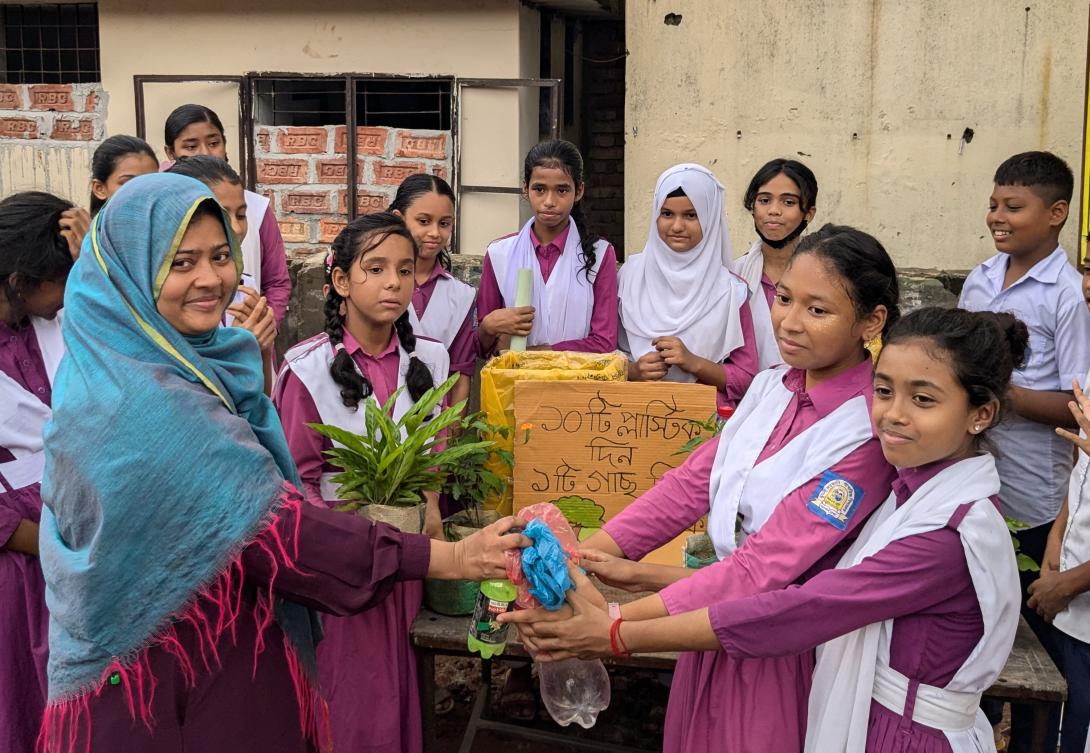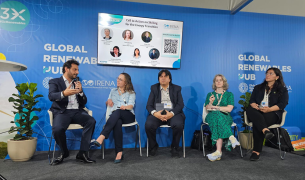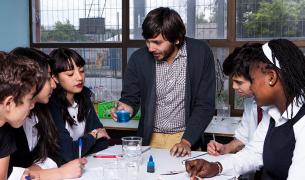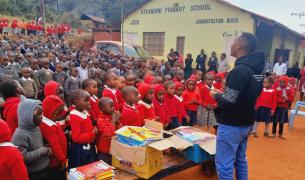Trading plastic for trees: The power of letting students lead

Where I live in Bangladesh, young people are actively shaping the future they want. This month we remember the student-led protests that toppled the reigning government and called out against systemic oppression and economic hardship. These protests created a legacy of student leadership and voice that demonstrates how young people, when united, can affect the trajectory of history.
As a Fellow of Teach For Bangladesh, I teach in a government school in Dhaka where most of the students come from low-income families. Not long after I began my journey as an educator, I realized that my role as their teacher is not only to deliver knowledge—it is also to support them to become responsible leaders who will transform society.
Bangladesh is at the frontline of the Climate Crisis. Floods, cyclones, rising temperatures, and air pollution aren’t future risks—they’re actively affecting our present. In 2024, my hometown was hit by devastating floods that disrupted schooling and displaced families. In many underserved communities, students navigate such challenges daily. Climate change for them is not just a theory, it's their lived reality.
Because climate change is such a significant factor in my students’ lives, they need to be both knowledgeable about the crisis and empowered to address it. I developed a project called Green-Future through which my students and I explored the causes and impacts of climate change, and discussed possible solutions for building a climate resilient community. Working together, they designed a project that involved collecting plastic waste and exchanging it for tree saplings. They led rallies, hosted cleaning campaigns, and explained the concept of a carbon footprint to their parents. I guided, listened, and stepped back when they were ready to step forward.
As a result of the class’s efforts, one of my students was recently invited to participate in a panel discussion at Teach For Bangladesh, alongside seasoned climate activists, corporate leaders, and researchers. Her speech was grounded in lived experience, as well as an understanding of the science behind climate change. The clarity and confidence she demonstrated showed us all what student leadership actually looks like—and was a powerful reminder that we need to believe in our students' potential before they start believing in themselves.
Climate change disrupts learning both directly and systemically. Floods, frequent heatwaves, and natural disasters force students out of their classroom and widen learning gaps. But the deeper threat lies in how the government has to redirect education budgets toward emergency response—delaying long term investments in equity and quality. This vertical disruption and horizontal policy shift disproportionately affect students from marginalised communities, pushing them further behind.
This is why supporting young people to see themselves as leaders and changemakers matters now more than ever. Students are not only victims of climate inaction, they are frontline witnesses, creative problem-solvers, and powerful advocates. When we place students at the heart of the climate solutions, they don’t just adapt—they act. They reimagine the system, hold leaders accountable, and innovate solutions.
We, the teachers, are not the drivers and students the passengers on this journey. They are both the drivers and passengers of their own journey. Our role is to be allies—to listen deeply, equip them with knowledge, and travel beside them.
The Shaping a Better Future Blog Series explores the purpose and practices of education and the progress we can collectively make to ensure all students have access to the holistic education they need to shape a better future.



